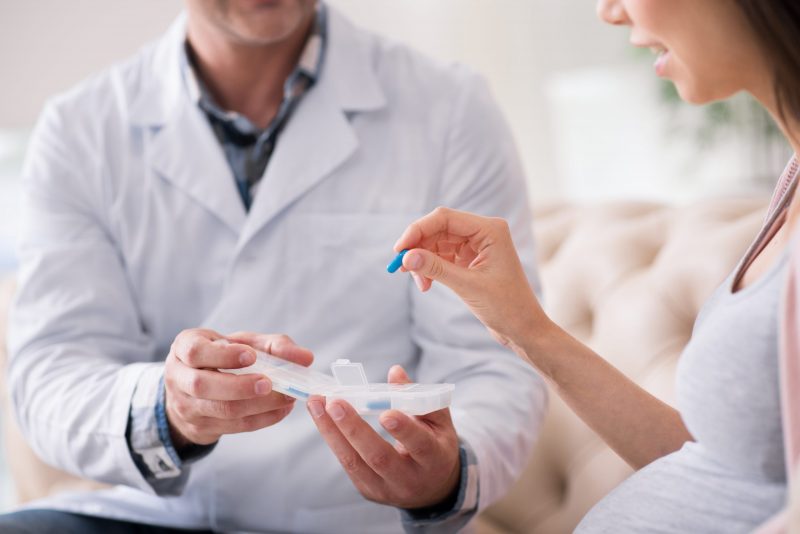The increase in demand for infertility evaluation and treatment in the United States over the past 20 years is probably due to many factors:- The tendency of women to delay childbearing because of their work or education so that more women are trying to conceive over the age of 35 years when it’s more difficult.
- The significant increase in pregnancy rates with assisted reproductive techniques (ARTs) over the past 20 years.
- An increased awareness of such treatments due to the internet, news programs/publications and TV shows discussing fertility issues more openly.
 The causes of infertility can be divided into four major categories:
The causes of infertility can be divided into four major categories:
1) Female factors
2) Male factors
3) Combined female/male factors
4) Unexplained infertilityIn approximately 30% of infertility cases, the problem is mainly due to a female factor, in 30% of infertility cases, male factor is the issue. 25% of infertility cases are due to abnormalities detected in both partners, and in 15% of cases, no diagnosis can be made after a complete investigation. Those with no diagnosis after a complete evaluation are said to have ‘unexplained infertility’.
Evaluation of the Infertile Couple
Most couples that present to an infertility clinic will need to be evaluated before they are treated. Some do present with obvious problems such as prior tubal ligation, prior vasectomy, history of menopause, absence of period etc.; but most couples will need an evaluation to determine the cause of the infertility. The first part of all evaluations should be a medical history. The medical history should include: a menstrual history, prior pregnancy history, history of pelvic surgeries on the male or female partner, the frequency and timing of intercourse, history of prior pelvic infections, general medical health history and social/ family history.Clues that there might be a ovulation problems include: late age for puberty onset, presence of PMS, abnormal cycle length, heavy or light menstrual bleeding, premenstrual spotting, hot flashes, milky breast discharge, thyroid disorders and excessive physical exercise and/or weight changes (due to eating disorders).Clues that there might be tubal/ pelvic factors include: a history of recurrent vaginal infections, history of a chlamydia infection (Chlamydia trachomatis is the most common infection causing blocked tubes), history of prior tubal pregnancies, history of endometriosis, family history of endometriosis, and previous abdominal surgery/ gynecological operations (ovarian cystectomy, fibroid removal, endometriosis surgery) all predispose to adhesion formation and increase the likelihood of tubal dysfunction. Severe menstrual cramps and painful intercourse may suggest endometriosis or adhesions.Clues that there may be a male factor involved: Low libido, lack of beard development, difficulty with intercourse, history of infertility in a prior relationship, history of exposure to toxic chemicals, frequent hot tub use, ejaculatory dysfunction, history of testicular surgery and family history of infertilityThe next step is a physical exam and pelvic ultrasound on the female partner. The physical exam will look for medical problems (breast discharge, enlarged thyroid, absence of signs of normal pubertal development) and assess the normalcy of the ovaries, uterus, cervix and vagina. Exams that demonstrate an enlarged uterus can suggest fibroids. If the exam suggests enlarged ovaries the doctor may be concerned about endometriosis or ovarian cysts. Breast discharge may suggest an elevated prolactin level and an enlarged thyroid can suggest thyroid disease.After the exam, testing will begin.
Hormonal Assessment of Ovulatory Function
FSH, estradiol, Anti-mullerian hormone, TSH and PRL are necessary in women with infertility. When excessive hair growth and/or acne is present, testosterone, dehydroepiandrosterone sulfate and 17-hydroxy-progesterone should be measured. The evaluation of the female hormones in red are generally performed on cycle day 2, 3 or 4. Those hormones in red are the best estimate of the female partner’s egg quality and quantity of eggs remaining and help determine the best treatment for a patient.
Tubal Patency Assessment
Evaluation of tubal patency in a normal cycling woman with a partner with a normal sperm count should be mandatory. It may not be initially needed in women with irregular cycles. In order to assess tubal patency, hysterosalpingography (HSG) or a sonoHSG is usually performed in the early part of the menstrual cycle. Since false positive results (i.e. blocked tubes found, but the tubes are really open) have been reported with these tests. Further investigation of tubal patency may be obtained by the more invasive laparoscopy if the results are abnormal.
Uterine Abnormalities
The diagnosis of infertility secondary to uterine problems is generally done by ultrasound and a pelvic exam. The role of uterine anomalies in infertility is controversial, with the exception of an absent uterus or malformed uterus from birth. The relationship between uterine defects (leiomyomata, polyps, and intrauterine adhesions) with an impaired ability to conceive is open to question but they may play an important role in recurrent pregnancy loss. The integrity of the uterus is usually assessed by pelvic transvaginal ultrasound. Further information can be obtained by the HSG and/or hysteroscopy, if needed.
Male Partner Diagnostic Tests
In the investigation of the male partner, at least one semen analysis (SA) should be performed according to the World Health Organization/Kruger guidelines. If the first semen analysis is normal, there is generally no need for a repeat analysis. If an abnormal semen sample is obtained, an additional semen sample should be examined after an interval of 3-4 weeks to determine if the sperm is consistently abnormal. Many men with an abnormal sample on first evaluation will have a more normal result on the repeat exam.FSH, LH, and testosterone measurement should be performed in men with a low sperm counts. High FSH levels can suggest testicular damage or failure. Low levels of FSH, LH, and testosterone suggest hypogonadotropic hypogonadism, or a malfunction hypothalamus or pituitary gland.Chromosome abnormalities are much more frequent in men with low sperm counts than in the general population; therefore, chromosome testing should be performed in men with low sperm counts or no sperm. The Y chromosome should also be assessed in men with low sperm counts and higher levels of deletions in the Y chromosome are seen in men with low or absent sperm counts when compared with men with a normal sperm count. In men with no sperm in the ejaculate, a test for Cystic Fibrosis should be performed to test for blockage in the vas deferens (the tube that carries the sperm to the outside in the ejaculation process).
Unexplained Infertility
When a routine infertility workup yields normal results (egg quality, patent tubes, SA and normal medical history) in both partners, the couple is defined as having unexplained infertility. More than 30% of couples with unexplained infertility will become pregnant within 5 years of testing and no treatment. However, in case of long-standing, unexplained infertility, with a female partner more than 30 years of age, it is difficult to apply this approach because as one ages their chance of pregnancy declines. Success with minor treatments for unexplained infertility is high.
Summary and Conclusion
Infertility evaluation should be undertaken after one year of trying without success in women under the age of 35 years and after 6 months of unsuccessful attempts in women over 35. The basic infertility evaluation may demonstrate easily correctable problems and may not always need expensive fertility therapy.
 The causes of infertility can be divided into four major categories:
1) Female factors
2) Male factors
3) Combined female/male factors
4) Unexplained infertilityIn approximately 30% of infertility cases, the problem is mainly due to a female factor, in 30% of infertility cases, male factor is the issue. 25% of infertility cases are due to abnormalities detected in both partners, and in 15% of cases, no diagnosis can be made after a complete investigation. Those with no diagnosis after a complete evaluation are said to have ‘unexplained infertility’.
The causes of infertility can be divided into four major categories:
1) Female factors
2) Male factors
3) Combined female/male factors
4) Unexplained infertilityIn approximately 30% of infertility cases, the problem is mainly due to a female factor, in 30% of infertility cases, male factor is the issue. 25% of infertility cases are due to abnormalities detected in both partners, and in 15% of cases, no diagnosis can be made after a complete investigation. Those with no diagnosis after a complete evaluation are said to have ‘unexplained infertility’.


